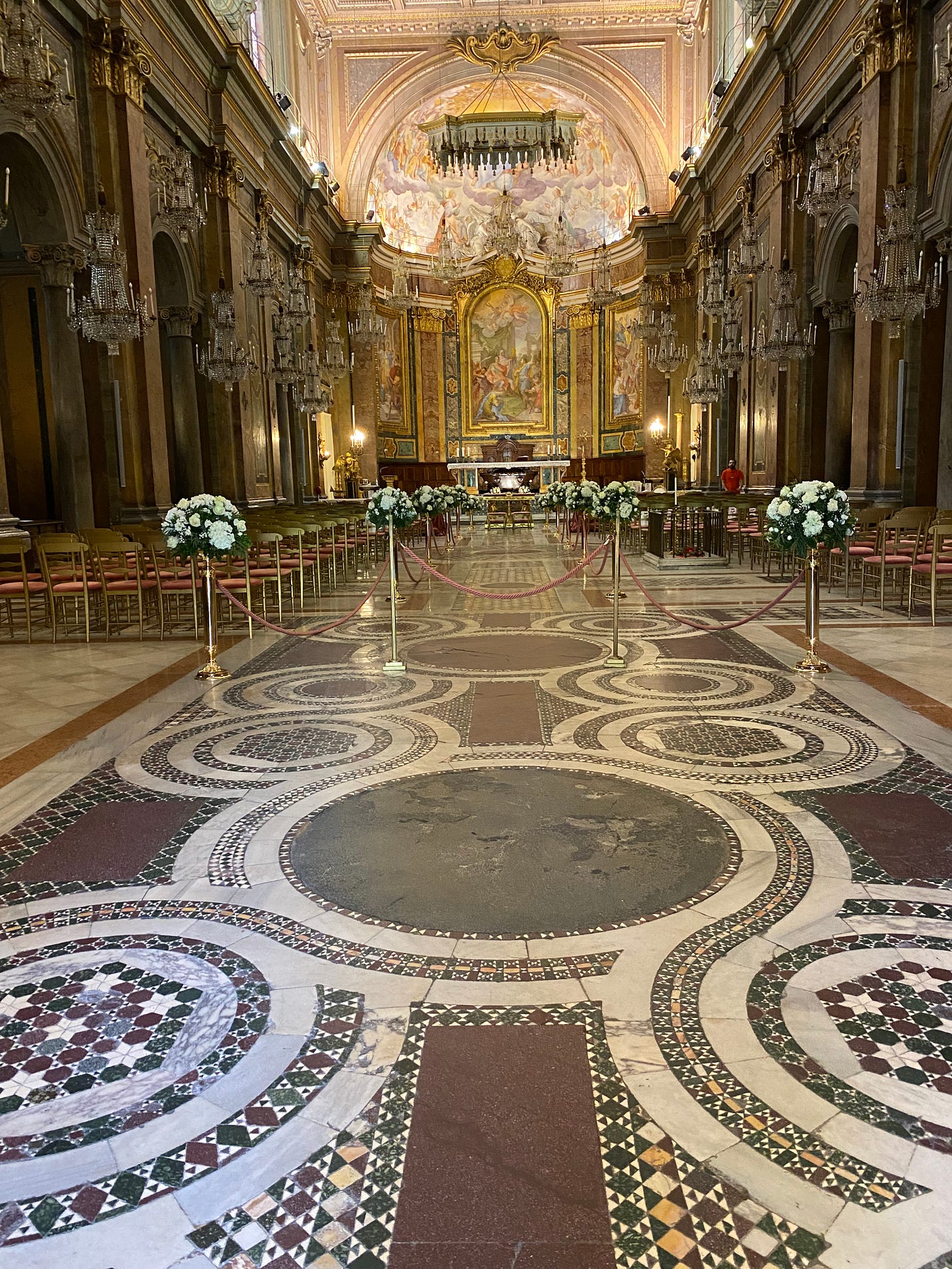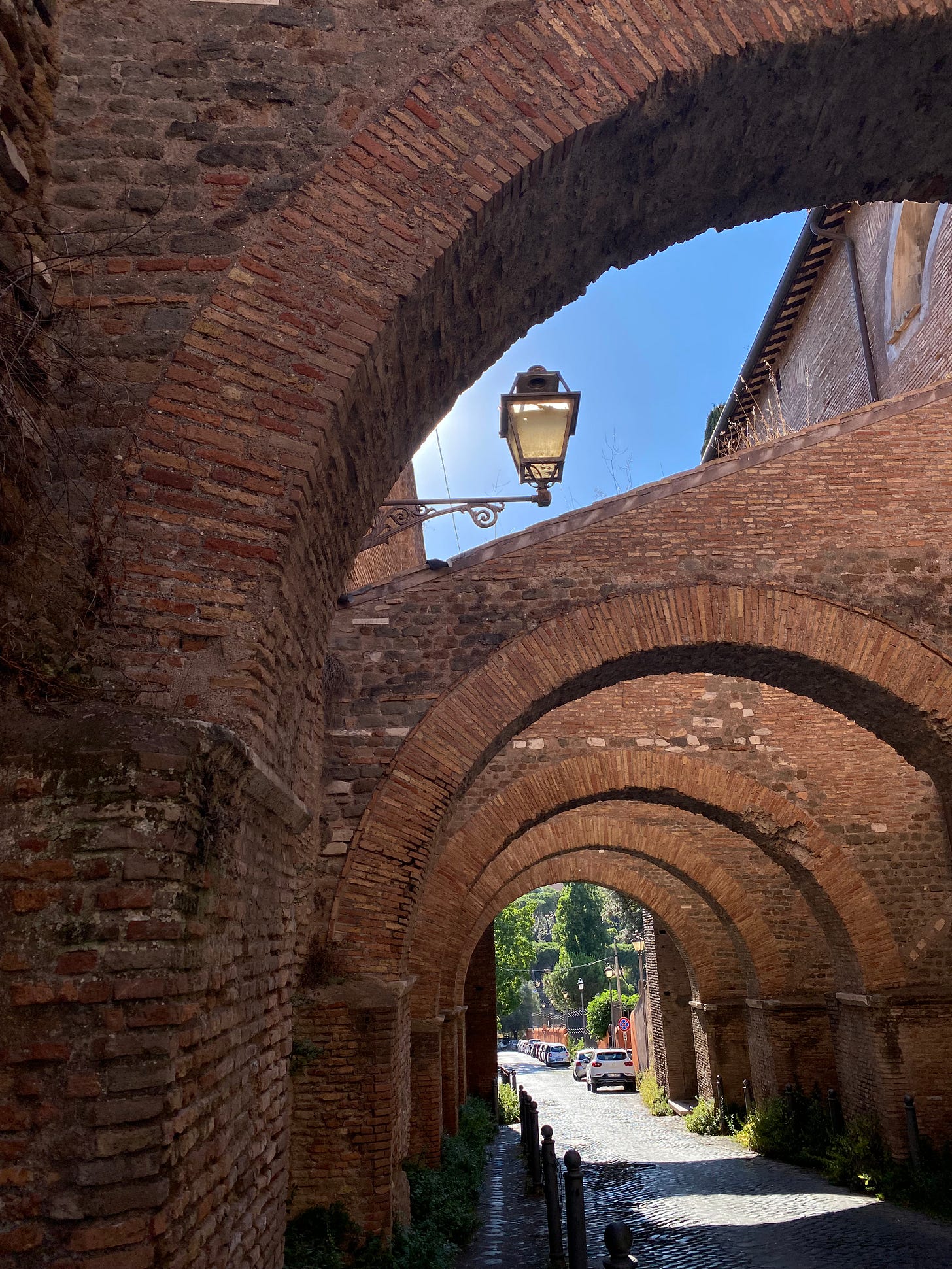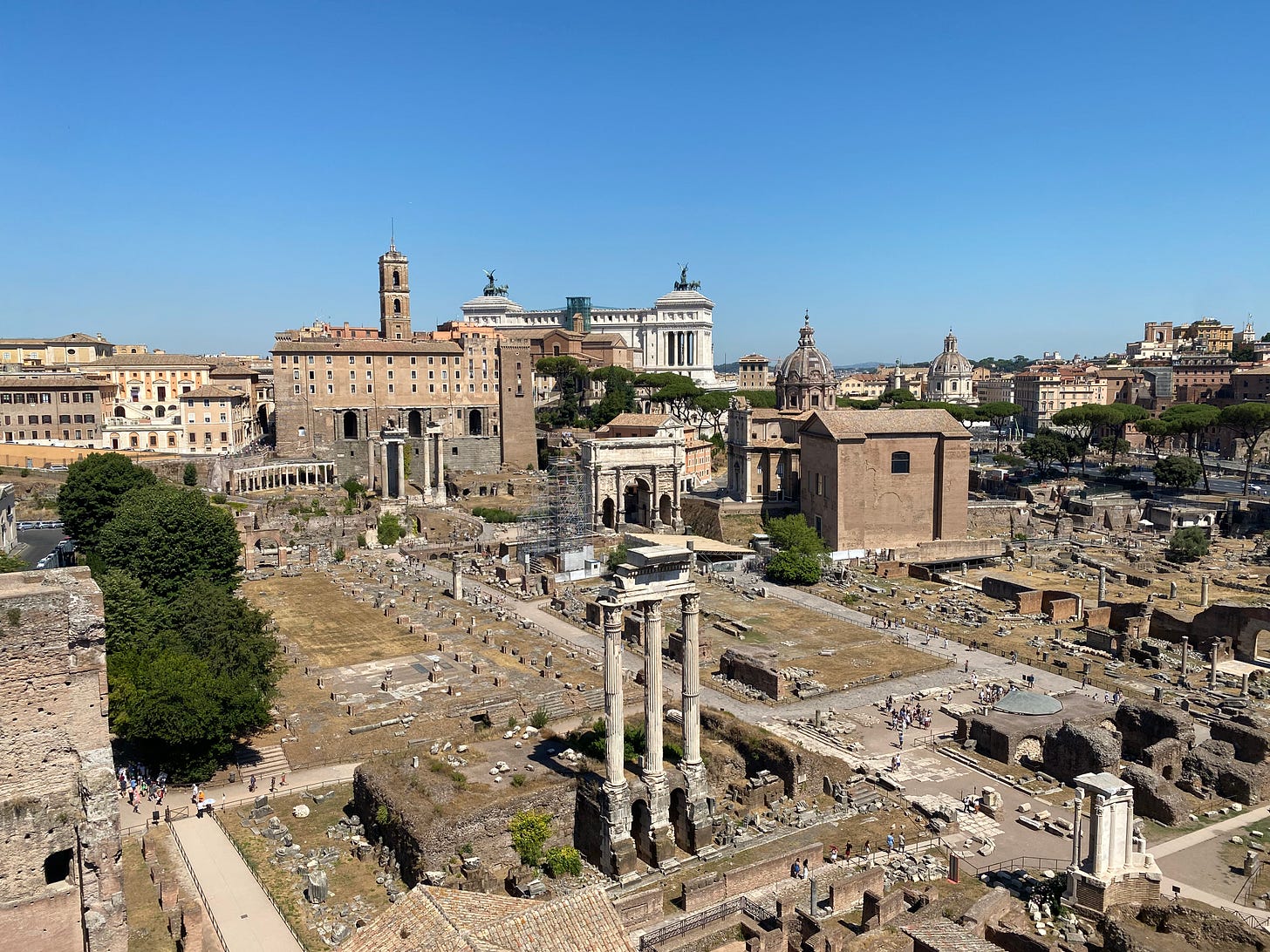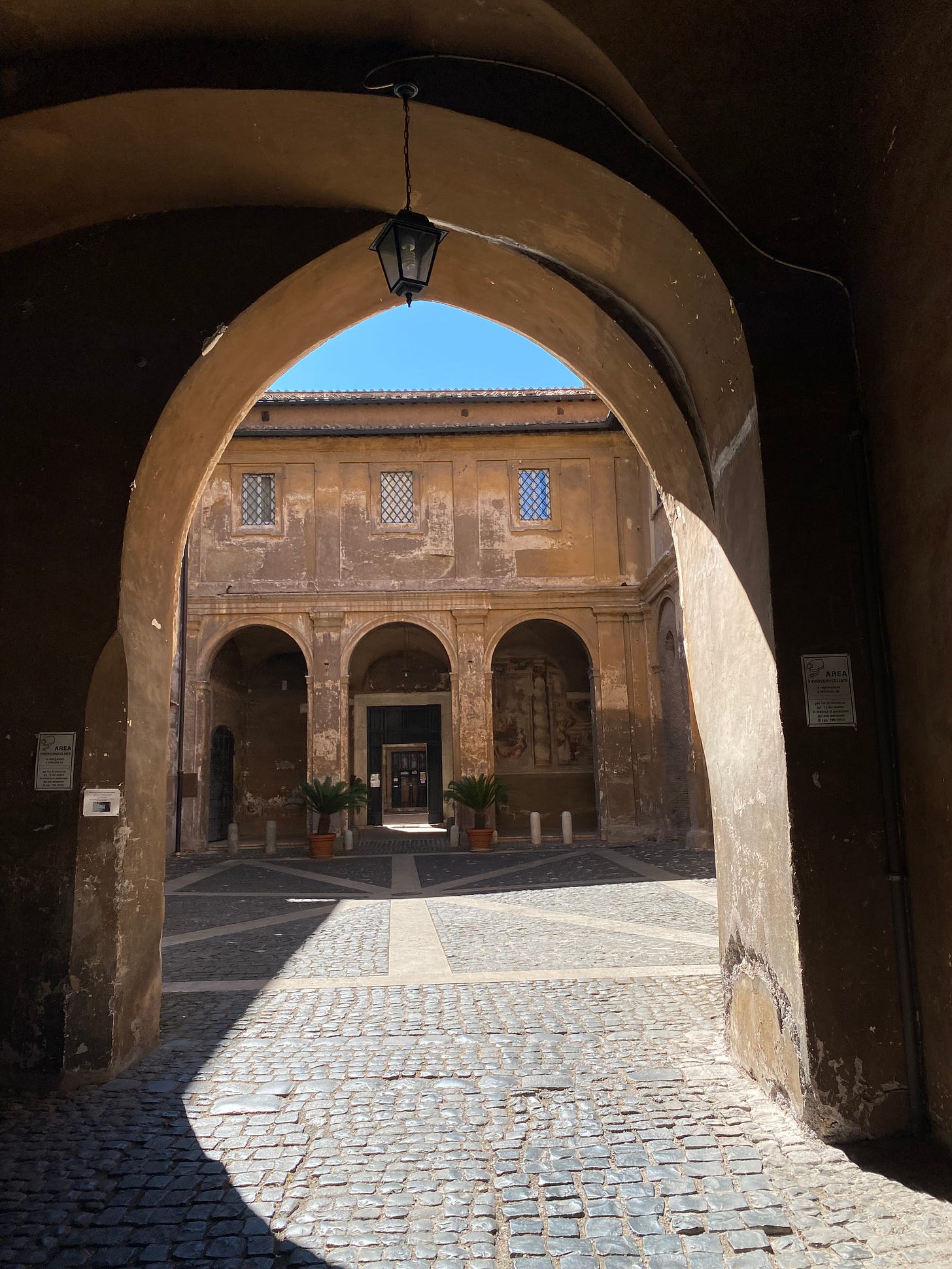July's Monthly Newsletter
A Roman July always has a particular torpor – melting asphalt and lavic cobbles exude the heat of the midday sun; riding my Vespa, blissful at eight in the morning, is like being in a hairdryer by three – but this year it feels particularly enervating. Even by Roman standards this is a long hot summer, which began with anomalous temperatures in early May and hasn’t let up. Our apartment not only has no air conditioning, but also has not so much as a fan. Presumably if we’d really felt the need we’d have got one by now, so I think there’s a certain amount of intransigent purism in this curious choice which I’ve always observed with the detachment of a note-taking anthropologist, rather as if it had nothing to do with me. I could just buy a fan, I suppose. But I don’t think I will. As I write it’s nine in the evening and a languid breeze is guttering over the terrace, and that’s the joyous reward for the climate control purist.
Visiting Rome at this time of year, however, needn’t be miserable: my advice is early starts, a shady nap in the air conditioning of your hotel/apartment (I'm not a proselytising climate control purist and you are on holiday, after all), and evening wanders are all a good idea. Nobody should ever see the Roman Forum at two o’clock in the afternoon in July, but at either end of opening hours it’s a pleasure.
Zipping between churches is another good strategy, all that marble has cooling properties, and the contrast between the reverent silence of timeless shadowy interiors, motes of incense dancing in the occasional shaft of sunlight, and the hubbub of summer streets is particularly appealing I find.
Even in the centre of town it is not hard to find a spot far from the madding crowd. For example this week I’ve had a flurry of folk choosing to take my “Underground Rome” tour which visits excavations and churches on the Caelian Hill. Underground sites and ancient churches are ideal hot weather exploring.
Just two minutes from the Colosseum is one of my favourite Roman streets (in the first photo), the Clivo di Scauro, perhaps named for Marcus Aemilius Scaurus, consul of 109 BCE. Here the distant echoes of a bustling street of Roman shops and apartments coexist with the shadows of medieval pilgrims arriving in their hundreds from the Lateran; the late fourth/early fifth century basilica dedicated to the martyrs John and Paul sits atop a Roman house with a frescoed Venus decorating a fountain courtyard; the bell tower employs a corner of the base of the temple of the Divine Claudius as its foundation. In a splendid, and bathetically improbable, twist the interior of the church houses chandeliers which once hung in the Waldorf Astoria in New York City, a gift from Cardinal Francis Spellman.

To find oneself on the Clivo di Scauro in the early twenty-first century is a positively dizzying, Stendhalian, experience. Quieter now than at any time in its ancient and medieval past, the vestigial presence of those who’ve been before seems particularly acute. Untempered by the kerfuffle of the quotidian, the extraordinary fact of being here and in this moment is somehow amplified. Or perhaps it’s the heat.
All best from Roma,
Agnes






The Clivo di Scauro is Mark's favorite street too! I am in awe of your non climate controlled existence.
Hi Agnes, we were introduced to the Clivio Scauro area many years by an old Italian teacher if ours who moved back to Testaccio about 15 yrs ago after 25 years in Sydney, and try to visit there whenever we’re in Rome. The mind boggles at the enormous size of the base of the temple to Claudius? It must have been huge. Also loved the ancient circular church S Stefano Rotondo(?) inspite of the gory wall mosaics.